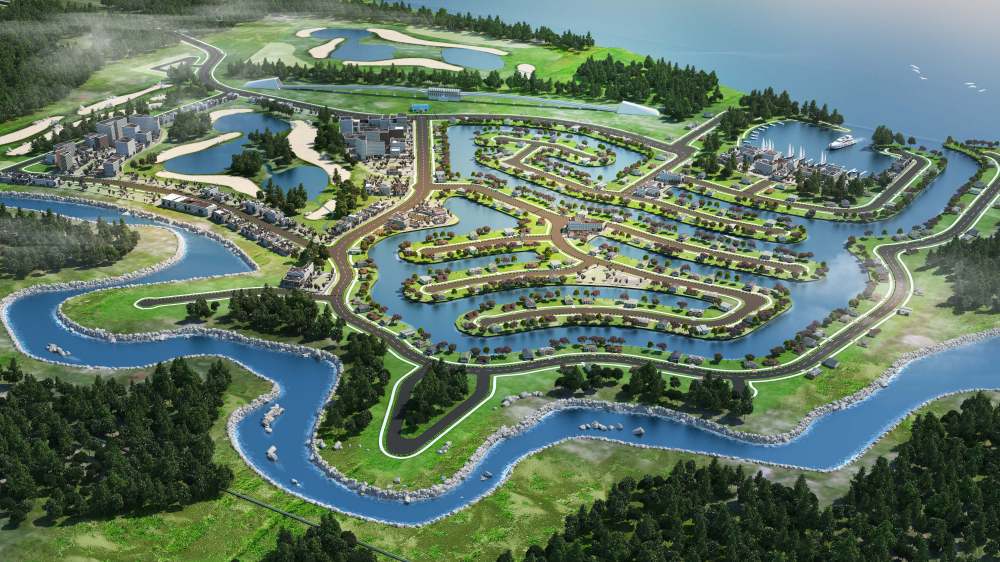-
1. FLOVAC VACUUM SEWERAGE SYSTEMS
Flovac's global engineering team understands the importance of local and project specific issues, whether that be floods, earthquakes, remoteness, operational issues or environmental concerns.
Flovac's research and development team focuses on finding solutions to difficult wastewater and sewage problems using vacuum technology. This includes the use of wireless monitoring technology and energy and water saving solutions.
The strength of the company is in the "system" approach to any project ensuring involvement from design through to operational excellence.
Our services include: Concept Design and Budgets, Pump Station and Reticulation Design, Master Planning, System Audit's, Project Management, System Maintenance, Asset Management Support and Training.
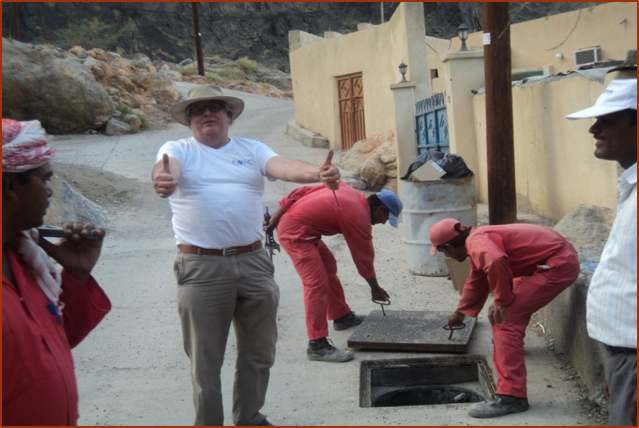
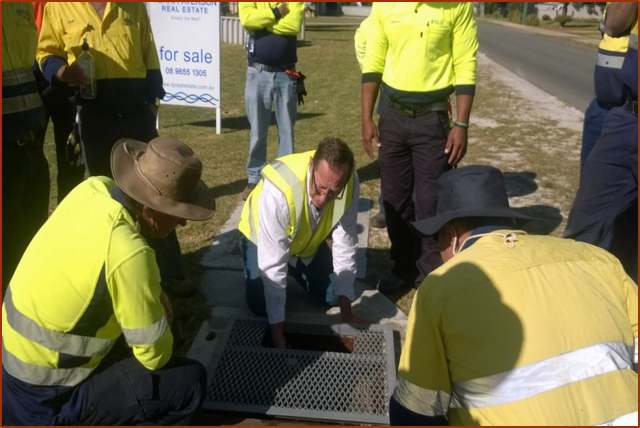
-
2. VACUUM SEWERAGE SYSTEMS
Nearly all vacuum systems are installed in area's with very bad ground conditions. High water table, hard rock or acid sulphate soils. The objective of the vacuum system is to keep all infrastructure as shallow as possible in the ground.
The average size catchment is 1,000 houses but this can range from a single building to a complex system with over 500,000 people. Many systems can be staged over a number of years and minimising initial costs can be important.
Many of Flovac's projects are staged private developments, but many more traditionally have been in towns replacing septic tanks or aging gravity sewers.
Of importance to many clients is that a negative pressure system cannot leak, this safeguards important local tourist or aquaculture area’s. This also impacts on restricting stormwater from entering the sewer system.
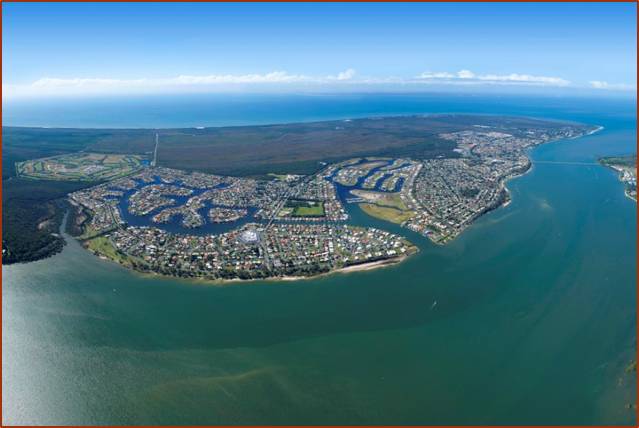

-
3. VACUUM PIPEWORK
Vacuum Mains go from the Collection Pit to the vacuum Pump Station, transporting sewage and air.
The vacuum mains can be made out of either PE or PVC pressure pipe and are designed to be laid in the ground as shallow as possible at a 1/500 grade. The contractor builds steps in the pipework to keep the mains from getting too deep. The more steps that are installed, the more hydraulic losses are created, lessening the distance that the mains can go.
A well designed system could go as far as 3 miles or 5 km from the vacuum pump station in each direction. It is important to have collection pits evenly distributed around the catchment and along the mains to ensure plenty of air, which is energy, entering the system.
Most systems are designed with 3-5 mains to get even distribution of flows and for easy operational efficiency.
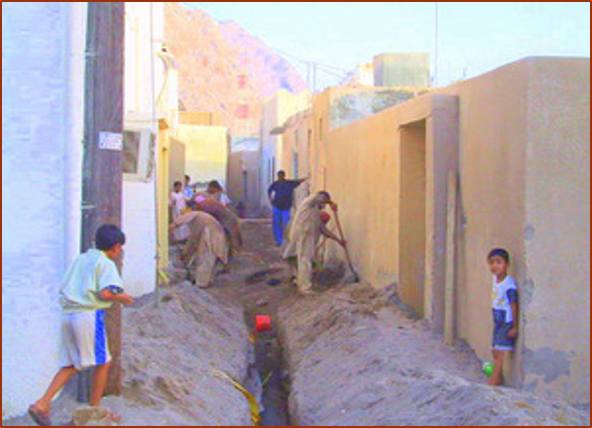
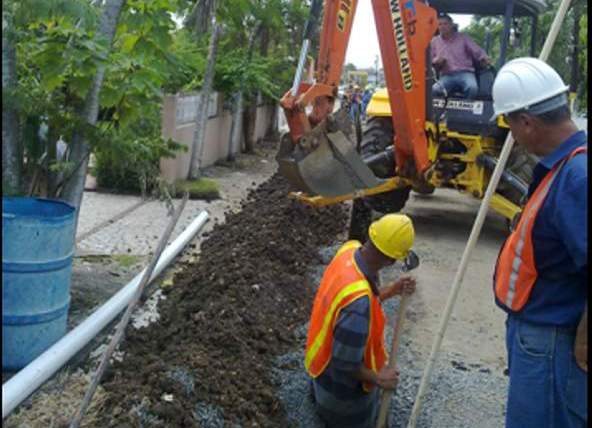
-
4. COLLECTION PIT
The Collection Pit houses the 90mm (3 inch) Flovac vacuum interface valve and the collection sump for the sewage.
When approximately 40 litres of sewage enters the sump from up to 4 houses a sensor pipe in the sump will trigger the valve to open allowing sewage and then air to enter the vacuum mains at a velocity of 4-6 metres per second (15-18 feet). This suction also ensures that no bad gases remain in the pit and no explosive situation can occur.
No power is required at this point as all operations are performed pneumatically.
Flovac PE pits are most commonly used as they allow for separation between the sump and the Flovac valve ensuring that operators are not in touch with sewage. The valve is always located within easy reach for the operator without having to get into a confined space.

-
5. VACUUM INTERFACE VALVE
The Flovac valve is made primarily of Glass filled polypropylene and has an internal diameter of 78mm (3.07"). It has a design life of 50 years and requires only a small number of minor parts to be replaced every 10 years.
The Valve and controller have been made for the ease of the sewage operator with a see through controller that is easily detached from the valve body via a simple slip key. The valve body top can be easily unscrewed from the valve body to clear any unusual blockages.
The valve has also been made with the potential to be fully monitored so an operator can remotely check for any faults or parts wearing or if any infiltration is occurring.
You can see from the video that sewage first goes through the valve and then air. The valve plunger never closes on sewage ensuring very little wear and tear on the components.
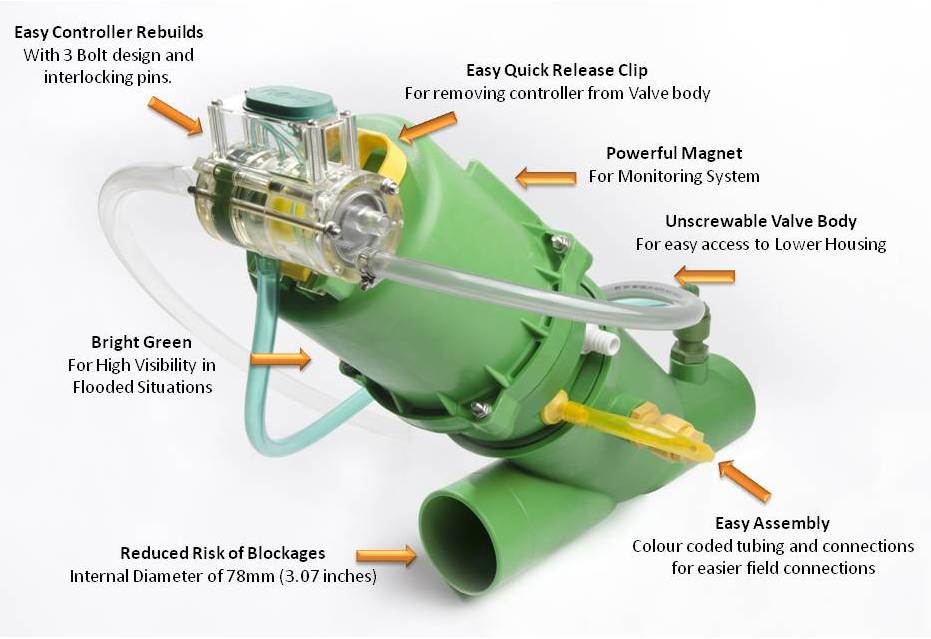
-
6. VACUUM PUMP STATION
The Vacuum Pump Station houses a collection tank (to collect the sewage). Discharge pumps to send the sewage to the treatment plant. Controls to automate the station and vacuum pumps to keep a negative pressure in the vacuum mains.
The vacuum pressure usually runs between -75 to -55 kPa or 16-23 feet of pressure.
Usually only one vacuum pump station is required in an average catchment. On the Project shown on the drawing only one vacuum pump station was required.
The Vacuum pump station can send the sewage up to 10 miles, or more, to the Treatment Plant if required. It is just a matter of correct sizing of the pumps and rising main.

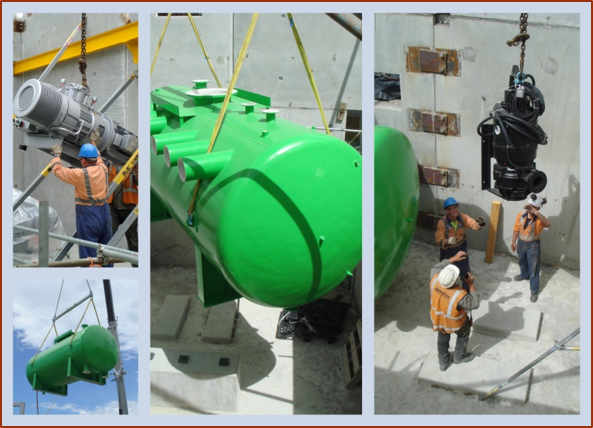
-
7. HOSPITAL SYSTEM
The problem that many hospitals face, particularly those focused on cancer wards is the radioactive wastewater that is held for long periods of time in storage tanks. The use of vacuum toilets in the cancer wards reduces the amount of water to 1 litre or .25 gallons per flush reducing the water usage and the space required for storage tanks.
The vacuum system is also important in containing any cross contamination of the radioactive waste as well as any infectious diseases which might be carried either through the wastewater network or via overflows through a gravity pipe network.
As all vacuum pipework is under negative pressure, any break in the pipe will ensure that no wastewater in the pipe can leak out.

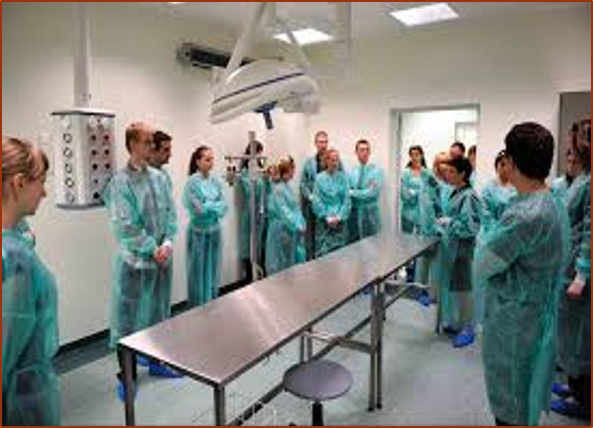
-
8. HIGH RISE BUILDINGS
Flows from high rise buildings can be easily accommodated into a vacuum system, with careful planning and design.
Flovac has many projects with 10 and even 20 story buildings going into the system. The collection pit is not a standard one as emergency storage needs to be taken into account as well as any potential water logging of the vacuum mains.
Many high flow examples include Hotels, Schools, Hospitals, apartment buildings, industrial and commercial area's.
We find that many of these type of projects are integrated into larger schemes and are often built in area’s where there is a high water table which may even include reclaimed land.
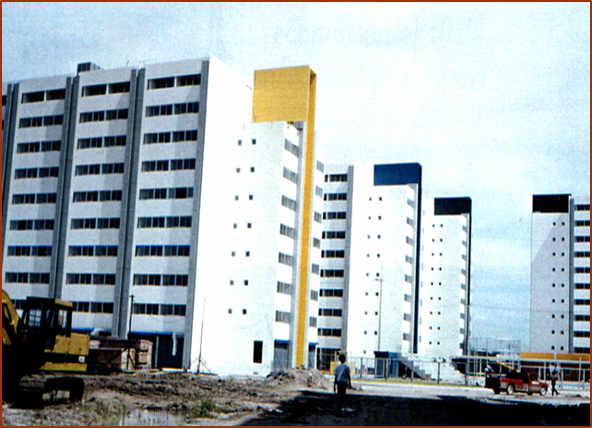

-
9. TRAIN SEWAGE EXTRACTION SYSTEM
Trains with toilets can no longer dump waste onto the tracks and must store all sewage until service at the maintenance facilities.
It is important that any sewage extraction occurs without spillage or odour and can be done quickly to get the train back into service in the fastest possible time.
By using the Flovac system at a maintenance facility a fully automated system can extract sewage safely and can be fully monitored by the operations staff.
Facilities have been installed in a number of European Countries and in 2014 a large facility was installed in Canada.
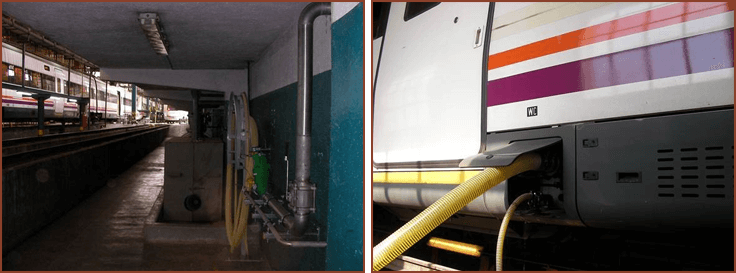
-
10. MARINA
Vacuum systems can handle the extraction of sewage from either small or luxury boats, larger commercial vessels or ferries. An easy coupling attached to a flexible hose can be attached to the vessels sewage holding tank.
The valve/hose operation is pneumatic and no electrical power is required on the dock which ensures a safe operation of the facility.
All infrastructure can be hidden under the dock or locked up in cabinets.
A marina system is easy to install , has no leaks and no odours. It is also easy to incorporate buildings in the marina precinct, this may be offices, restaurants or even Hotels or apartments.
Many marina systems form part of a larger residential housing estate or resort. The municipal system can then be used with boat pump out facilities attached.

-
11.TELECONTROL
Flovac’s monitoring system, Flovactronic, allow technicians to control the vacuum system easily and detect and solve possible dysfunctions quickly, as locate a blocked valve.
The Flovactronic system implies a reduction in maintenance costs and a detailed knowledge of the installation by the technicians.
Flovac also offers a wireless system.

-
12.SUPERMARKETS
Vacuum sewerage system it is especially useful to evacuate the condensation water of the refrigerators, something essential in an establishment with these characteristics.
Additionally, the vacuum pipes network of small diameter can be installed in the roof (or false ceiling) of the supermarket. This feature helps to change location of refrigerators, because it is not necessary to make trenches in the ground to install new gravity pipes.

